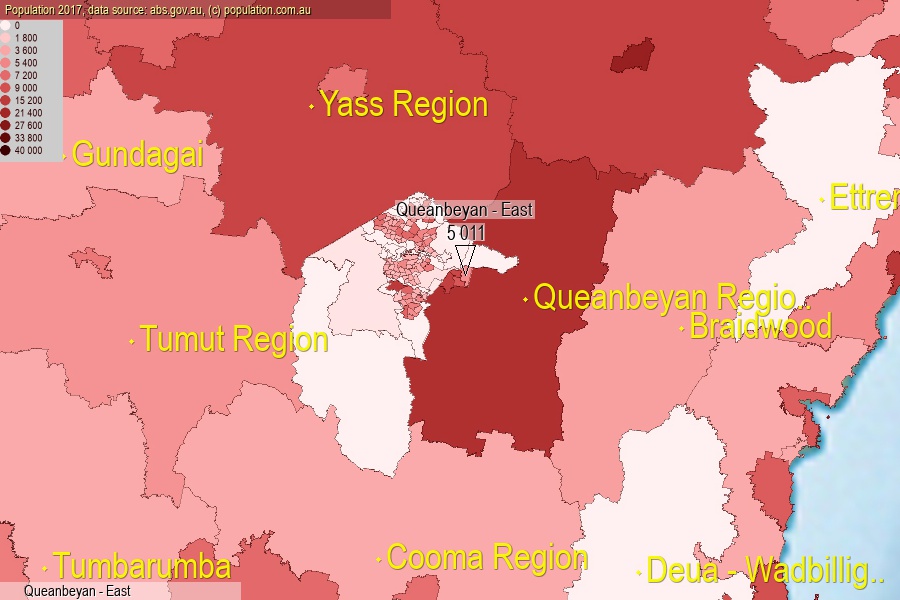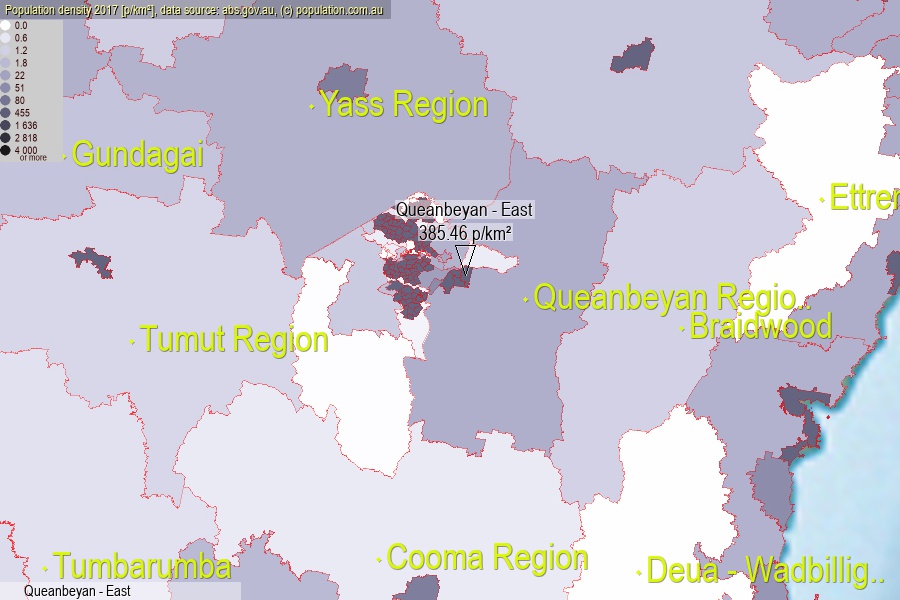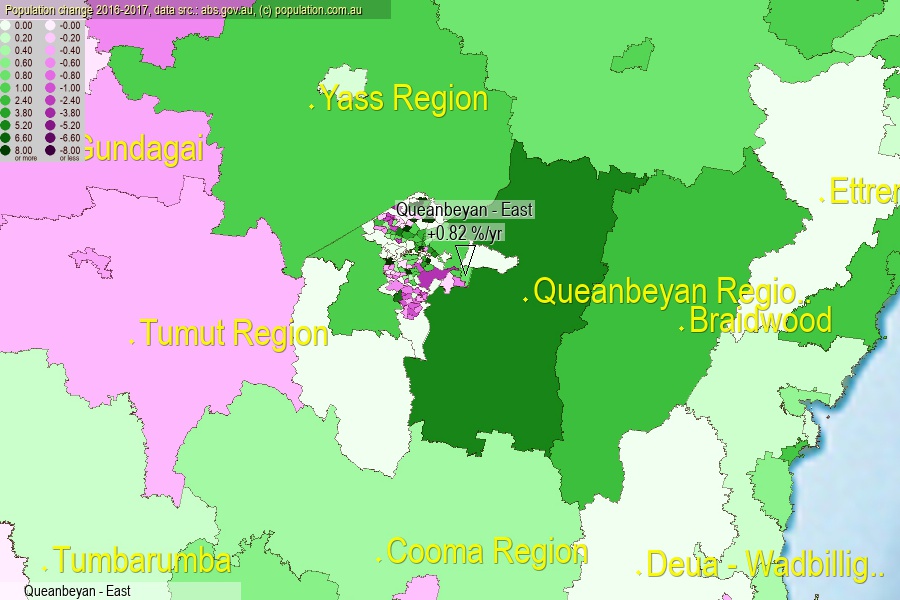 population.com.au
population.com.auLast official estimated population of Queanbeyan - East (as Statistical Area Level 2) was 5 011 people (on 2017-06-30)[2]. This was 0.02% of total Australian population and 0.063% of NSW population. Area of Queanbeyan - East is 13.00 km², in this year population density was 385.46 p/km² . If population growth rate would be same as in period 2016-2017 (+0.82%/yr), Queanbeyan - East population in 2025 would be 5 351. [0]



Click to enlarge. Queanbeyan - East is located in the center of the images.
Population [people], population density [p./km²] and population change [%/year] [2]
View borders » (new window) [4]
[1991-1992] -0.20 %/Yr.
[1992-1993] -0.26 %/Yr.
[1993-1994] -0.32 %/Yr.
[1994-1995] -1.38 %/Yr.
[1995-1996] +0.09 %/Yr.
[1996-1997] +4.35 %/Yr.
[1997-1998] +0.74 %/Yr.
[1998-1999] +5.75 %/Yr.
[1999-2000] +1.93 %/Yr.
[2000-2001] +3.10 %/Yr.
[2001-2002] +3.77 %/Yr.
[2002-2003] +3.58 %/Yr.
[2003-2004] -0.02 %/Yr.
[2004-2005] -0.73 %/Yr.
[2005-2006] +3.15 %/Yr.
[2006-2007] +3.24 %/Yr.
[2007-2008] +3.05 %/Yr.
[2008-2009] +2.55 %/Yr.
[2009-2010] +2.14 %/Yr.
[2010-2011] +2.87 %/Yr.
[2011-2012] +0.40 %/Yr.
[2012-2013] +0.24 %/Yr.
[2013-2014] -0.32 %/Yr.
[2014-2015] -0.12 %/Yr.
[2015-2016] +0.18 %/Yr.
[2016-2017] +0.82 %/Yr.
[0] Calculated with linear interpolation from officially estimated population
[1] Read more about SA2 and Australian Statistical Geography Standard (ASGS) on abs.gov.au
[2] Population data from Australian Bureau of Statistics (Population and density: 2017; change: 2016-2017)
[3] Digital Boundaries: Australian Statistical Geography Standard (ASGS) 2016.
[4] Border coordinates are simplifyed using Ramer-Douglas-Peucker algorithm.